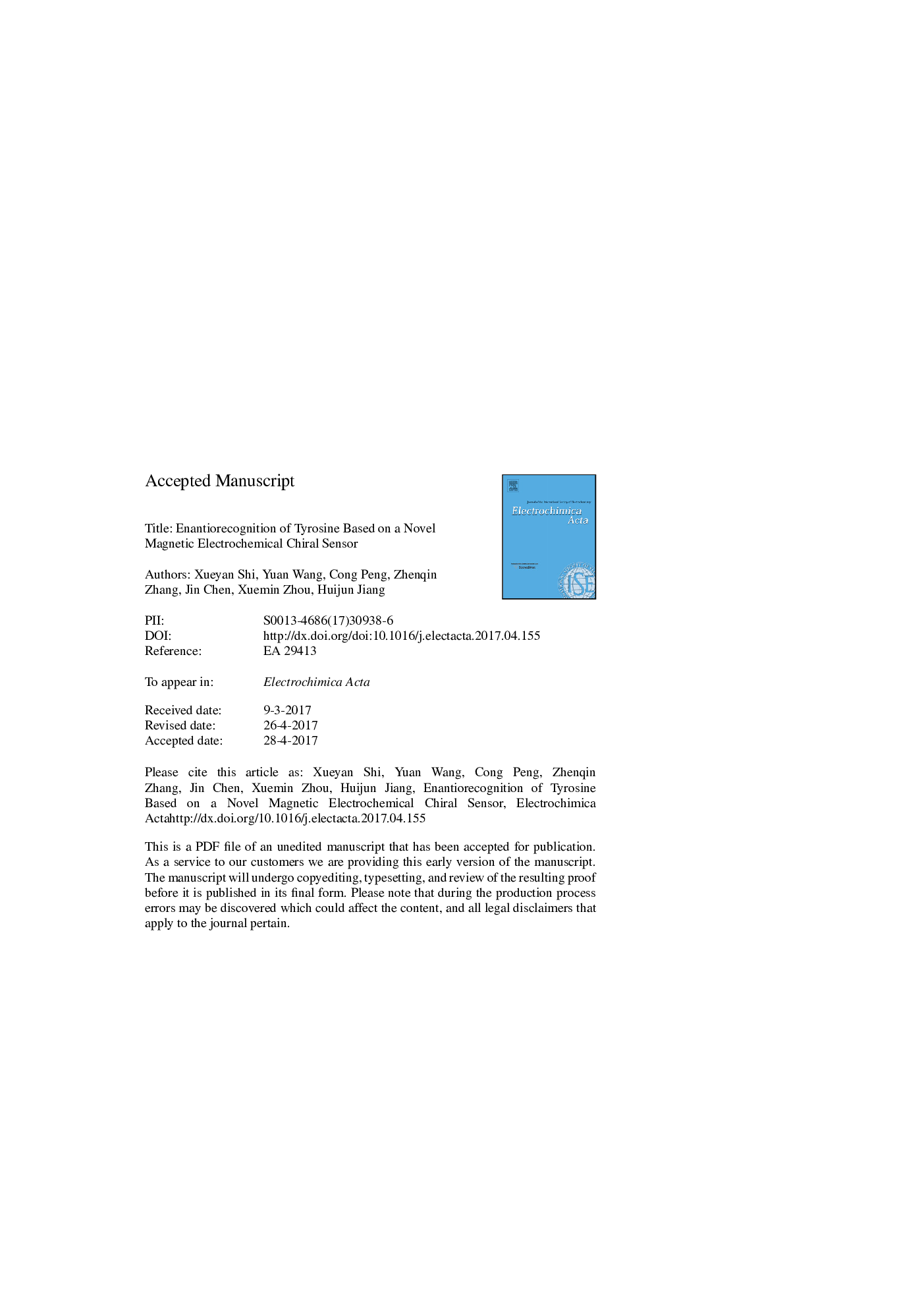| Article ID | Journal | Published Year | Pages | File Type |
|---|---|---|---|---|
| 4767029 | Electrochimica Acta | 2017 | 38 Pages |
Abstract
Chiral selector-functionalized magnetic nanoparticles were achieved by self-assembly anchoring L-cysteine (L-Cys) on the surface of the Au/Fe3O4 nanocomposites, which was synthesized via a facile in-situ reduction process. The as-prepared L-Cys-Au/Fe3O4 magnetic nanoparticles (MNPs) were characterized by scanning electron microscopy, energy dispersive X-ray spectroscopy, ultraviolet-visible spectroscopy, Fourier-transform infrared spectroscopy and electrochemical methods The typical MNPs with uniform globular morphology not only can provide the enhanced pore accessibility and excellent electrocatalytic active site for the guest species, but also effectively improve the load capacity of chiral selector of L-Cys. Based on magnetic field-induced assembly, a novel magnetic electrochemical chiral sensor (MECS) was first constructed by MNPs for the discrimination and determination of tyrosine (Tyr) enantiomers. Under the optimized experimental condition, the oxidation peak current ratio of L-Tyr to D-Tyr (IL/ID) and the difference between the peak potential of the two enantiomers (ÎEp = ED- EL) was observed to be 1.85 and 84 mV according to square wave voltammetry (SWV). With the synergic effect of the magnetic Fe3O4 NPs and the chiral electrocatalytic activity of L-Cys functionalized AuNPs, a linear relationship between the peak current and the concentration of the two enantiomers was obtained over the range of 1-125 μM, with the limit of detection of 0.021 μM and 0.084 μM for L- and D-Tyr, respectively. The preferential chiral recognition for L-Tyr was further verified by circular dichroism spectroscopy. Furthermore, the sensitive MECS has been successfully used for the practical determination of L- or D-enantiomer in the Tyr mixture solutions by continuously increasing the concentration of one isomer, showing the consistent and reproducible results.
Related Topics
Physical Sciences and Engineering
Chemical Engineering
Chemical Engineering (General)
Authors
Xueyan Shi, Yuan Wang, Cong Peng, Zhenqin Zhang, Jin Chen, Xuemin Zhou, Huijun Jiang,
